Top 5 Hidden Places Around the World: Unveiling the Mysteries
In a world filled with well-explored destinations, there still exist hidden gems that captivate the imagination of adventure seekers and wanderlust enthusiasts. These secluded havens are shrouded in mystery, boasting unparalleled beauty and unique histories that remain largely untouched by the masses.
Join us on a virtual journey as we unveil the top 5 hidden places around the world, where nature and history converge in spectacular harmony.
Son Doong Cave, Vietnam
Tucked away in the heart of Phong Nha-Ke Bang National Park in Vietnam lies the awe-inspiring Son Doong Cave. Discovered in 1991 but only officially explored in 2009, this colossal cavern is the world’s largest cave passage. Towering stalagmites and colossal chambers create an otherworldly landscape that’s a testament to the power of nature. Son Doong Cave is famous for its breathtaking beauty and the adventurous trek required to reach it. For those daring enough to explore its depths, guided tours are available, offering a once-in-a-lifetime experience.
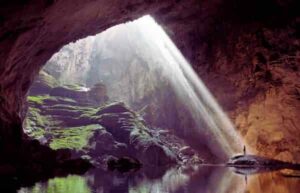
Son Doong Cave, nestled in the heart of Phong Nha-Ke Bang National Park, has earned its fame as the world’s largest cave passage. This natural wonder is renowned for its colossal dimensions, towering stalagmites, and otherworldly landscapes that create a subterranean paradise. To experience the magnificence of Son Doong Cave, travelers can embark on an adventure that is as challenging as it is rewarding.
What’s Famous
- Colossal Dimensions: Son Doong is not just a cave; it’s an underground kingdom. With passages that can reach up to 200 meters in height and 150 meters in width, it dwarfs any other cave system on the planet.
- Unique Formations: The cave is adorned with impressive stalagmites and stalactites, creating a mesmerizing environment that looks like it’s from another world.
- Jungle Within the Cave: One of the most extraordinary features is the lush subterranean jungle thriving inside the cave, complete with its own ecosystem and rare plant species.
- Fast-Flowing Underground River: The cave is home to a fast-flowing underground river, adding to its unique and dynamic ecosystem.
How to Travel
- Guided Tours Only: Due to the challenging and remote nature of the cave, exploring Son Doong is possible only through guided tours. Oxalis Adventure Tours is the sole operator authorized to conduct expeditions to Son Doong, ensuring a safe and regulated experience.
- Physical Fitness: Travelers must be in good physical condition to embark on this adventure. The journey involves trekking through dense jungle, river crossings, and navigating challenging cave terrain.
- Permit and Regulations: Obtaining a permit is essential, and the number of visitors is limited to minimize environmental impact. Regulations are in place to protect the cave’s fragile ecosystem.
- Cave Expedition: The typical Son Doong expedition takes several days and includes camping within the cave. Explorers traverse the vast chambers, cross underground rivers, and witness the cave’s breathtaking beauty.
- Best Time to Visit: The cave is open to visitors from February to August when weather conditions are optimal. The dry season ensures safer and more accessible conditions for exploring.
- Local Culture: Apart from the cave itself, visitors can also immerse themselves in the local culture, interacting with the ethnic minority communities in the surrounding areas.
Son Doong Cave, Vietnam Location Map
Embarking on a journey to Son Doong Cave is not just a physical adventure; it’s a rare opportunity to witness a hidden world that very few have had the privilege to explore. While the challenges are significant, the reward is an unparalleled encounter with nature’s grandeur.
Socotra, Yemen
Known as the “Galapagos of the Indian Ocean,” Socotra is an archipelago off the coast of Yemen that has remained virtually untouched by modern civilization. Home to unique flora and fauna found nowhere else on Earth, including the iconic Dragon’s Blood Tree, Socotra is a UNESCO World Heritage Site. The island’s distinct biodiversity and unusual landscapes make it a haven for nature enthusiasts. To visit Socotra, travelers can arrange guided tours that explore its pristine beaches, limestone plateaus, and vibrant markets, providing an immersive experience into the island’s rich cultural tapestry.
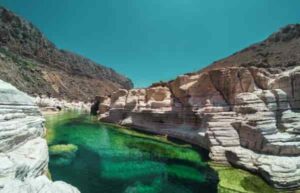
Socotra, often referred to as the “Galapagos of the Indian Ocean,” is an archipelago that has captured the imaginations of intrepid travelers and nature enthusiasts alike. This remote and largely untouched destination, situated off the coast of Yemen, boasts a unique blend of biodiversity, surreal landscapes, and a rich cultural tapestry. Here’s a glimpse into what makes Socotra famous and how to embark on a journey to this otherworldly paradise.
What’s Famous
- Flora and Fauna: Socotra is renowned for its distinct biodiversity, hosting a myriad of plant and animal species found nowhere else on Earth. The iconic Dragon’s Blood Tree, with its umbrella-like canopy, is a symbol of the island’s unique natural heritage.
- Landscape: The island’s landscapes are both surreal and breathtaking, featuring white sandy beaches, limestone plateaus, and towering mountains. The diverse terrain creates a scenic mosaic that is a delight for nature photographers and explorers.
- Cultural Richness: Socotra is home to a rich cultural heritage shaped by its isolation. The people of Socotra have a unique way of life, and their traditions and customs add depth to the overall experience of visiting the archipelago.
- UNESCO World Heritage Site: Recognizing its ecological significance, Socotra was designated as a UNESCO World Heritage Site in 2008. This acknowledgment underscores the importance of preserving its rare and irreplaceable natural wonders.
How to Travel
- Travel Restrictions: Due to the geopolitical situation in Yemen, travel to Socotra may be subject to restrictions. It is crucial to stay updated on the current situation and adhere to any travel advisories.
- Entry Permits: Obtain the necessary entry permits to visit Socotra. This may involve coordination with local authorities and ensuring compliance with any regulations in place.
- Local Guides: Exploring Socotra is best done with the assistance of local guides who are familiar with the terrain and can provide valuable insights into the island’s ecology and culture.
- Transportation: Reach Socotra by taking a flight from mainland Yemen. Flights are limited, and schedules may be irregular, so careful planning is essential. Once on the island, transportation is primarily by four-wheel-drive vehicles.
- Accommodation: Accommodations on Socotra range from basic guesthouses to more comfortable options. It’s advisable to book accommodations in advance, especially during peak tourist seasons.
- Exploration and Adventure: Socotra offers a range of activities, from relaxing on pristine beaches to hiking through the Haghier Mountains. Delve into the local markets, interact with the welcoming inhabitants, and savor the unique flavors of Socotra cuisine.
Visiting Socotra is a journey into a world apart, where nature unfolds in its most unique and untouched form. While challenges may exist, the reward is an unforgettable experience immersed in the unparalleled beauty and cultural richness of this enchanting archipelago.
The Door to Hell, Turkmenistan
In the heart of the Karakum Desert in Turkmenistan, a fiery pit known as the “Door to Hell” has been burning continuously for over four decades. Originally a natural gas drilling site, the cavern collapsed into a massive crater in 1971, and to prevent the spread of methane gas, it was set ablaze. The Door to Hell has become a unique attraction, drawing visitors fascinated by its surreal, ever-burning flames. To witness this infernal phenomenon, travelers can join guided expeditions that navigate the desert, providing insights into the region’s geological history and the story behind the Door to Hell.
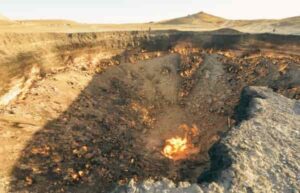
What’s Famous
- Origin Story: The Door to Hell, officially known as the Darvaza Gas Crater, originated in 1971 when a Soviet drilling rig accidentally tapped into a massive underground natural gas cavern. To prevent the spread of potentially harmful methane gas, the decision was made to set the crater ablaze, expecting the fire to burn out in a few weeks. Instead, it has been burning continuously ever since.
- Eternal Flames: The crater, measuring about 70 meters in diameter, is a surreal landscape where flames dance perpetually, creating an otherworldly spectacle against the dark desert backdrop.
- Visitor Attraction: Despite its remote location, the Door to Hell has become a popular destination for intrepid travelers seeking to witness the fiery pit up close. The glow from the flames can be seen from miles away, adding to its allure.
- Nighttime Illumination: The Door to Hell takes on an even more surreal appearance at night when the flames cast an eerie and captivating glow across the desert, making it a unique and unforgettable nocturnal experience.
How to Travel
- Remote Location: The Door to Hell is situated in a remote part of the Karakum Desert, making travel to the site an adventure in itself. Ashgabat, the capital of Turkmenistan, is the nearest major city.
- Guided Tours: Exploring the Door to Hell is typically done through guided tours organized by local travel agencies. These tours provide transportation, knowledgeable guides, and camping equipment for those seeking to spend the night near the crater.
- Travel Permits: Turkmenistan has specific travel regulations, and obtaining the necessary permits to visit the Door to Hell is essential. Working with a reputable tour operator helps facilitate the permit application process.
- Camping Experience: Many tours offer the option to camp near the crater, allowing visitors to witness the flames both during the day and at night. Camping under the stars in the desert adds an extra layer of adventure to the experience.
- Safety Considerations: While the Door to Hell is a captivating site, safety precautions must be observed. Visitors are advised to stay on designated paths, as the ground around the crater can be unstable.
The Door to Hell, Turkmenistan Location Map
Visiting the Door to Hell is a journey into a surreal landscape where nature and human intervention have created an astonishing display. The allure of witnessing the eternal flames in the midst of the vast Karakum Desert adds a sense of mystery to this one-of-a-kind destination.
Mount Kailash, Tibet
Nestled in the remote corners of the Tibetan Himalayas, Mount Kailash is not only a sacred pilgrimage site for four major religions but also a breathtaking natural wonder. Its perfectly symmetrical peak and serene surroundings have sparked countless myths and legends. Pilgrims from various faiths undertake the challenging Kailash Kora, a trek around the mountain believed to bring spiritual enlightenment. Travelers can join organized tours that facilitate the trek, offering a unique blend of adventure and cultural immersion.
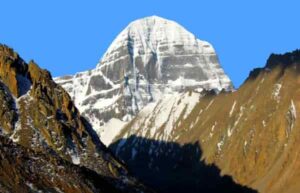
What’s Famous
- Spiritual Significance: Mount Kailash is regarded as the abode of Lord Shiva in Hinduism, a sacred site for Buddhists who believe it represents the mythical Mount Meru, and a destination for pilgrims in Jainism and Bon. Circumambulating the mountain is a sacred ritual believed to cleanse sins and bring spiritual enlightenment.
- Symmetrical Peak: The perfectly symmetrical shape of Mount Kailash adds to its mystique. Its pyramid-like summit rises majestically, creating an awe-inspiring sight against the backdrop of the Tibetan Plateau.
- Kora (Circumambulation): Pilgrims undertake the Kailash Kora, a trek around the base of the mountain. The 52-kilometer circumambulation is a challenging pilgrimage that draws devotees from around the world seeking spiritual merit.
- Scenic Beauty: Beyond its religious significance, Mount Kailash offers stunning vistas of pristine landscapes, including turquoise lakes and high-altitude plains, making it a haven for trekking enthusiasts and nature lovers.
How to Travel
- Permits and Restrictions: Obtain the necessary permits for traveling to Tibet. Mount Kailash is located in the Tibet Autonomous Region, and permits are required for both foreign and domestic tourists.
- Guided Tours: Traveling to Mount Kailash is typically done through organized tours. Local tour operators provide packages that include transportation, permits, accommodation, and experienced guides well-versed in the region’s cultural and spiritual significance.
- Altitude Considerations: Mount Kailash is situated at high altitude, and acclimatization is crucial to avoid altitude sickness. Travelers are advised to spend a few days in Lhasa or other lower-altitude areas before ascending to Mount Kailash.
- Kailash Kora: Undertaking the Kailash Kora is a physically demanding journey that takes approximately three days to complete. Pilgrims and trekkers alike must be prepared for varying weather conditions and challenging terrain.
- Best Time to Visit: The ideal time to visit Mount Kailash is during the warmer months from May to September when the weather is more favorable for trekking and circumambulation.
- Cultural Respect: Visitors are expected to show cultural respect to the sacred nature of Mount Kailash. This includes adhering to local customs, refraining from climbing the peak, and maintaining the sanctity of the pilgrimage site.
Mount Kailash, Tibet Location Map
It’s a spiritual odyssey that intertwines with the natural beauty of the Himalayas. Whether driven by religious devotion or a love for adventure, those who undertake the pilgrimage to Mount Kailash are rewarded with an experience that transcends the ordinary.
The Marble Caves, Chile
Situated in the remote Aysén region of Chile, the Marble Caves are a mesmerizing network of caverns sculpted by the azure waters of General Carrera Lake. Known for their ethereal beauty, these caves are a testament to the transformative power of water over millennia. Here’s what makes the Marble Caves famous and how you can explore this enchanting natural wonder.
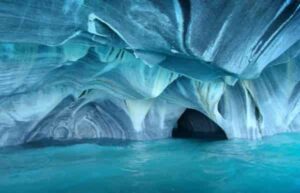
What’s Famous
- Formation by Erosion: The Marble Caves owe their existence to the gradual erosion caused by the turquoise waters of General Carrera Lake. Over centuries, the swirling currents have sculpted the marble into intricate formations, creating a unique and ever-evolving spectacle.
- Vivid Colors: The marble within the caves reflects the stunning hues of the lake’s waters, ranging from deep blues to vibrant greens. This interplay of colors, combined with the natural light filtering through, produces a visually stunning and surreal environment.
- Accessibility by Boat: The Marble Caves are best explored by boat. The smooth, reflective surface of the lake allows boats to navigate through the intricate network of caverns, offering visitors an up-close and personal experience with the natural artistry of the marble.
- Capillas de Mármol (Marble Chapels): One of the most famous sections of the caves is the “Capillas de Mármol,” or Marble Chapels. These chambers showcase the intricate patterns and formations of the marble, creating a cathedral-like ambiance that captivates all who venture inside.
How to Travel
- Access Points: The most common access points to the Marble Caves are the towns of Puerto Tranquilo and Puerto Rio Tranquilo on the shores of General Carrera Lake. These towns serve as starting points for boat tours to the caves.
- Boat Tours: Boat tours are the primary mode of exploration for the Marble Caves. Local operators offer guided tours that take visitors through the various chambers, providing insights into the geological processes that shaped the caves.
- Seasonal Considerations: The Marble Caves are best visited during the austral summer (Southern Hemisphere summer), typically from November to March. During this period, the weather is more conducive to boat travel, and the lake’s waters exhibit their most vibrant colors.
- Photography Opportunities: Photography enthusiasts will find the Marble Caves a treasure trove of unique and captivating scenes. The interplay of light and color within the caves creates opportunities for stunning photographs.
- Cultural Immersion: While exploring the Marble Caves, visitors can also immerse themselves in the local culture of the Aysén region. Interactions with the friendly inhabitants provide a glimpse into the traditions and lifestyle of this remote part of Chile.
- Conservation Awareness: Visitors are encouraged to be mindful of the fragile nature of the marble formations. Conservation efforts are crucial to preserving the beauty of the Marble Caves for future generations.
The Marble Caves, Chile Location Map
Journeying to the Marble Caves offers a rare opportunity to witness nature’s artistic prowess and immerse oneself in the tranquility of General Carrera Lake. As you navigate through the azure waters and explore the intricate chambers, the Marble Caves unfold as a testament to the exquisite beauty that can be shaped by the passage of time and the elements.
Conclusion
These hidden places offer a glimpse into the undiscovered wonders of our planet, inviting intrepid travelers to embark on unforgettable journeys. While these destinations remain off the beaten path, they are not immune to the effects of human impact. As we marvel at their beauty, let’s also strive to preserve and protect these hidden treasures for generations to come. Pack your virtual bags and set forth on a digital adventure to explore the secrets of the world’s top 5 hidden places.
A big thank you for exploring Techlesnar.com! Your visit means a lot to us, and we’re grateful for your time on our platform. If you have any feedback or suggestions, we’d love to hear them. Looking forward to serving you again soon!